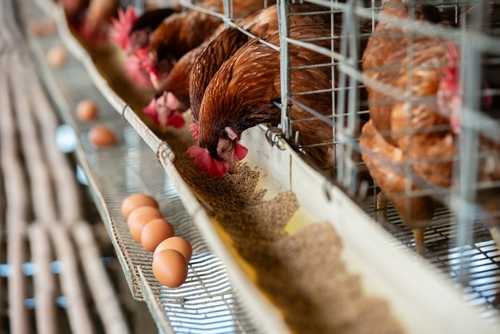
A deadly H5N1 avian flu strain has claimed its fifth victim in Cambodia this year, as health officials report a 52-year-old man died after direct contact with infected poultry, raising alarm about potential wider spread of the virus beyond birds.
Key Takeaways
- Cambodia has reported its sixth H5N1 bird flu case of the year, resulting in the country’s fifth death – a 52-year-old man who had handled sick and dead poultry.
- Three children and another adult man have also died from H5N1 in Cambodia this year, with only one infected woman recovering.
- A seventh case was subsequently reported involving a 41-year-old woman from Siem Reap province who is in critical condition.
- The U.S. Department of Agriculture is considering a controversial plan to vaccinate poultry against avian flu, which could impact exports and may not prevent transmission.
- H5N1 is expanding its reach beyond birds, with recent detections in mammals including a desert cottontail rabbit and a red fox.
Rising Bird Flu Death Toll in Cambodia
Cambodia’s ongoing battle with the deadly H5N1 avian influenza virus has intensified with officials confirming a sixth case resulting in the country’s fifth fatality. The victim, a 52-year-old man from Prasat village in Svay Rieng province, reportedly contracted the virus after handling sick and dead poultry. Before his death, the man exhibited severe respiratory symptoms characteristic of H5N1 infection, including fever, persistent cough, shortness of breath, and difficulty breathing. This latest death adds to the growing toll of bird flu victims in Cambodia, which has now claimed the lives of three children and two adult men this year alone.
Health authorities believe the specific strain in this case may be clade 2.3.2.1c of H5N1, though definitive identification is still pending. While most cases have been fatal, not all infections have resulted in death – one adult woman who contracted the virus earlier this year recovered, notably without reporting any direct contact with sick poultry. This unusual transmission route has raised concerns among epidemiologists about potential human-to-human transmission or unidentified exposure pathways that could complicate containment efforts.
Seventh Case Reported as Situation Worsens
The situation in Cambodia has deteriorated further with health officials announcing a seventh H5N1 case – the second reported in a single week. The patient is a 41-year-old woman from Siem Reap province who remains in critical condition after exposure to sick and dead poultry. Scientists are particularly concerned that recent cases in Cambodia may involve a novel reassortment of H5N1 clades, potentially creating a more transmissible or virulent strain. The clustering of cases in Cambodia represents one of the most significant outbreaks of human H5N1 infections in recent years, drawing international attention from health organizations concerned about pandemic potential.
The emergence of multiple H5N1 strains complicates the response, with another variant – H9N2 – also reported in the Western Pacific Region. At least three cases of H9N2 have been confirmed, all linked to poultry exposure. These concurrent outbreaks strain public health resources and highlight the ongoing challenge of managing avian influenza risks in regions with close human-animal contact, limited surveillance capabilities, and insufficient healthcare infrastructure to rapidly detect and respond to emerging threats.
U.S. Considers Controversial Vaccination Strategy
As bird flu cases mount globally, the U.S. Department of Agriculture is considering an unprecedented step: vaccinating poultry against avian influenza. This potential policy shift represents a significant change in America’s approach to managing avian flu, which has traditionally focused on culling infected flocks rather than vaccination. The consideration comes as H5N1 continues to spread among U.S. dairy cattle and increasingly appears in wild mammals, suggesting the virus is adapting to new hosts and potentially becoming more transmissible between mammals – a concerning development for human health security.
Implementing a mass vaccination program for poultry presents significant logistical challenges and may not completely prevent transmission of the virus. Additionally, such a program could have serious economic implications as some countries may restrict imports of vaccinated poultry, disrupting the substantial U.S. poultry export market. The vaccination debate reflects a growing recognition that current control measures may be insufficient against increasingly prevalent and adaptable avian flu strains that threaten both animal agriculture and potentially human health.
Growing Concern as H5N1 Spreads to Mammals
The U.S. Animal and Plant Health Inspection Service (APHIS) has confirmed additional H5N1 avian flu detections in mammals and wild birds, while reporting relatively low confirmations in poultry and dairy cattle. Recent detections include mammals such as a desert cottontail rabbit and a red fox, along with wild birds including grackles and pigeons. These cases demonstrate the virus’s concerning ability to infect species beyond its traditional avian hosts. Health officials worry that increased mammalian adaptation could eventually lead to strains that more easily infect humans or potentially transmit between people.
While the Biden administration continues to downplay the risks to human health, the steady expansion of H5N1 into new species suggests the virus is evolving in ways that could eventually pose a significant threat to public health. Unlike the manufactured COVID-19 crisis, bird flu represents a natural pathogen with documented high mortality rates in humans, making preparation and transparent monitoring essential. Conservative voices are increasingly calling for proactive measures that protect American agriculture and public health without the overreach and politicization that characterized the COVID response.












